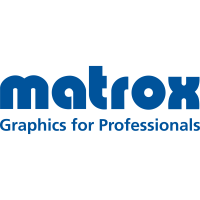ATI Mobility Radeon X1350 vs NVIDIA GeForce Go 7900 GTX
Comparative analysis of ATI Mobility Radeon X1350 and NVIDIA GeForce Go 7900 GTX videocards for all known characteristics in the following categories: Essentials, Technical info, Video outputs and ports, Compatibility, dimensions and requirements, API support, Memory. Benchmark videocards performance analysis: PassMark - G3D Mark, PassMark - G2D Mark.
Differences
Reasons to consider the ATI Mobility Radeon X1350
- Videocard is newer: launch date 5 month(s) later
- Around 4% better performance in PassMark - G2D Mark: 274 vs 264
| Specifications (specs) | |
| Launch date | 18 September 2006 vs 18 April 2006 |
| Benchmarks | |
| PassMark - G2D Mark | 274 vs 264 |
Reasons to consider the NVIDIA GeForce Go 7900 GTX
- Around 35% higher core clock speed: 500 MHz vs 371 MHz
- Around 6% higher boost clock speed: 500 MHz vs 470 MHz
- 8.1x more texture fill rate: 12 GTexel / s vs 1.484 GTexel / s
- 6x more pipelines: 24 vs 4
- 4x more maximum memory size: 512 MB vs 128 MB
- Around 85% higher memory clock speed: 1200 MHz vs 648 MHz
- 6.8x better performance in PassMark - G3D Mark: 270 vs 40
| Specifications (specs) | |
| Core clock speed | 500 MHz vs 371 MHz |
| Boost clock speed | 500 MHz vs 470 MHz |
| Texture fill rate | 12 GTexel / s vs 1.484 GTexel / s |
| Pipelines | 24 vs 4 |
| Maximum memory size | 512 MB vs 128 MB |
| Memory clock speed | 1200 MHz vs 648 MHz |
| Benchmarks | |
| PassMark - G3D Mark | 270 vs 40 |
Compare benchmarks
GPU 1: ATI Mobility Radeon X1350
GPU 2: NVIDIA GeForce Go 7900 GTX
| PassMark - G3D Mark |
|
|
||||
| PassMark - G2D Mark |
|
|
| Name | ATI Mobility Radeon X1350 | NVIDIA GeForce Go 7900 GTX |
|---|---|---|
| PassMark - G3D Mark | 40 | 270 |
| PassMark - G2D Mark | 274 | 264 |
Compare specifications (specs)
| ATI Mobility Radeon X1350 | NVIDIA GeForce Go 7900 GTX | |
|---|---|---|
Essentials |
||
| Architecture | R500 | Curie |
| Code name | M62 | G71 |
| Launch date | 18 September 2006 | 18 April 2006 |
| Place in performance rating | 648 | 651 |
| Type | Laptop | Laptop |
Technical info |
||
| Boost clock speed | 470 MHz | 500 MHz |
| Core clock speed | 371 MHz | 500 MHz |
| Manufacturing process technology | 90 nm | 90 nm |
| Pipelines | 4 | 24 |
| Texture fill rate | 1.484 GTexel / s | 12 GTexel / s |
| Transistor count | 107 million | 278 million |
| Thermal Design Power (TDP) | 45 Watt | |
Video outputs and ports |
||
| Display Connectors | No outputs | No outputs |
Compatibility, dimensions and requirements |
||
| Interface | PCIe 1.0 x16 | PCIe 1.0 x16 |
| Laptop size | large | |
| Supplementary power connectors | None | |
API support |
||
| DirectX | 9.0c | 9.0c |
| OpenGL | 2.0 | 2.1 |
Memory |
||
| Maximum RAM amount | 128 MB | 512 MB |
| Memory bandwidth | 5.18 GB / s | 38.4 GB / s |
| Memory bus width | 350 Bit | 600 Bit |
| Memory clock speed | 648 MHz | 1200 MHz |
| Memory type | 128 | 256 |
| Shared memory | 0 | 0 |









